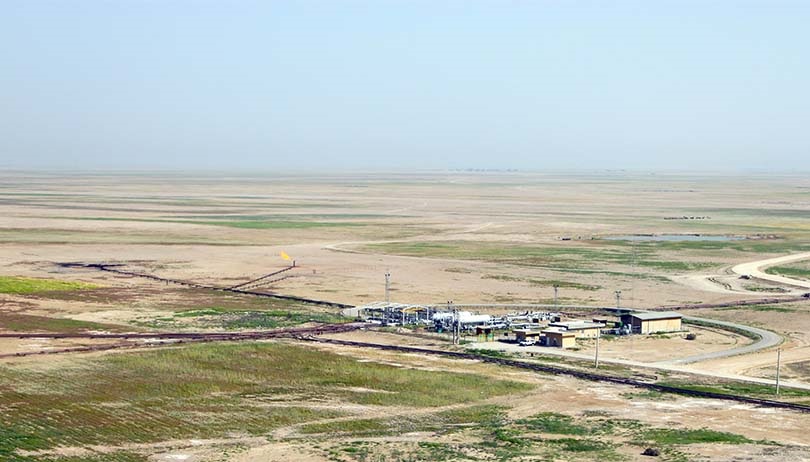Meantime, Iran has recovered oil from its reservoirs over the past four decades by applying natural pressure. Today, it has had to resort to downhole pumps for such recovery.
One of the largest oil reservoirs in Iran in such conditions is Ahvaz-Bangestan. Currently, 26 downhole pumps are extracting oil from this field.
Known by some experts as the world’s 9th largest reservoir, Ahvaz-Bangestan is currently producing at a low recovery rate. So far, only 1.2 billion barrels of oil has been recovered from this field which still contains 37 billion barrels of recoverable oil.
Petrorian Development Company (PEDCO) was awarded the development of the Ahvaz-Bangestan field in early 2005, but one year later the company announced it could not handle the project. Talks then got under way with Pars Tat, held jointly by "Mostazafan Foundation" and a Russian company. The talks failed though. Finally, the project was assigned by National Iranian South Oil Company (NISOC). Now with the conclusion of comprehensive studies of this field, the most significant measure would be to enhance recovery from this field to bring its production from the current 180,000 b/d to 231,000 b/d.
The Ahvaz field’s Bangestan reservoir was among projects offered for development by international firms under the newly developed IPC model of oil contract.
Due to its location beneath the city of Ahvaz and drilling challenges, this reservoir must be developed by horizontal drilling. Enhancing the recovery rate will not necessarily lead to output hike. Enhanced production may even lead to a decline in the recovery rate. Therefore, the priority in this project would be to boost the rate of recovery from this reservoir.
This reservoir has currently three production units with a rated capacity of 275,000 b/d, three desalting units with a rated capacity of 220,000 b/d and three compressors with a nominal capacity of 177 mcf/d.
NISOC officials say enhanced output would not be the only objective sought in the Ahvaz-Bangestan development project, because it would be significant to apply new technologies to enhance the current recovery rate of 10%. The outstanding features of this reservoir include its carbonated nature and the expansion of rock and fluid and as the mechanism of production. Everywhere in the world such reservoirs are of low recovery rate.
Enhanced oil recovery (EOR) has become a key issue for Iran’s petroleum industry. Being mostly more than five decades old, Iranian oil and gas fields’ recovery rate need to increase. That requires highly expensive cutting edge technologies.
IPC contracts envision remuneration for oil companies offering EOR technology. The long-term nature of contracts also would automatically motivate investors to brace for such projects.
The issue of transfer of technical knowhow and upgrading petroleum industry management are key issues requiring joint cooperation.
Iranian petroleum industry practitioners, despite al problems and obstacles, have fulfilled their obligations with regard to foreign companies to prepare the ground for cooperation. However, political concerns resulting from the US’s withdrawal from the 2015 Iran nuclear deal and the concomitant re-imposition of sanctions prevent foreign oil companies from taking the next step forward. Add to this domestic politically-motivated pressure and lack of national cohesion on national interests and the survival of the nuclear deal, dubbed the Joint Comprehensive Plan of Action (JCPOA).
It seems that the best way to get out of such stalemate would be to embark on a charm offensive in a bid to neutralize anti-JCPOA actions both inside and outside Iran.
Iran’s oil and gas industry is now in the middle of its lifecycle. Many Iranian oil fields have become mature or are facing sharp production decline due to the lack of modern technology. Consequently, Iran’s oil and gas output has declined, thereby undermining Iran’s position in the highly competitive global oil market.
Courtesy of Iran Petroleum


Your Comment